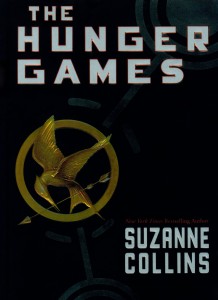 By Tristian Evans/entertainment editor
By Tristian Evans/entertainment editor
In the world of Suzanne Collins’ novel The Hunger Games, in addition to dealing with the usual angst of being a teenager, people between the ages of 12 and 18 must also deal with the possibility of dying a brutal death on national television.
Originally published in 2008, the movie version, directed by Gary Ross of Seabiscuit fame and starring Jennifer Lawrence and Josh Hutcherson, is due for a March release.
Set in a dystopian future, The Hunger Games follows protagonist Katniss Everdeen as she struggles to survive the bloody competition invented by the cruel Capitol to keep citizens under control.
A 12-district nation known as Panem now exists where North America once stood. The Capitol’s totalitarian government rules Panem with an iron fist and, as punishment for a past rebellion, the Capitol reminds citizens of its absolute power with the Hunger Games.
The deadly contest throws a boy and a girl from each district into an arena with weapons and forces them to kill each other or die themselves. All the while, the other districts watch — some in horror, some making bets on who will win.
When Katniss’ sister Prim is drafted into the games, Katniss immediately takes her little sister’s place. The novel chronicles her struggle to survive the games and return to her family. Katniss is tough, independent and good with a bow and arrow, attributes that play a role in helping her survive. She must also deal with her burgeoning feelings for fellow District 12 competitor, Peeta, who early in the games publicly declares his love for her. At first, she believes his declaration a trick, but she eventually realizes he might be telling the truth.
The Hunger Games is a character-driven novel. Although its high concept of people killing each other on national TV is interesting, readers will find themselves interested in Katniss’ past and the things that have shaped her into the young woman she is when the novel begins.
Collins manages not only to create a well-rounded protagonist, but she achieves this with most of her secondary characters. For example, Peeta, a baker’s son from District 12, has had the misfortune of being drafted into the Hunger Games.
As the novel continues, readers will learn that he is just as tough and deadly as any of his fellow Hunger Games competitors.
His love for Katniss creates a twisted Romeo and Juliet scenario that makes for great tension throughout the first half of the novel. It is quickly thrown out later as a change in the Games makes it possible for both of them to win.
Collins’ writing is also a huge part of what makes the book a good read. Her ability to include flashbacks into the story without slowing it down is masterful. Not only is Collins a talented wordsmith, but she also has a fertile imagination.
The futuristic setting leads to the inclusion of some interesting concepts such as the genetically engineered mocking jays, singing birds that can mimic human speech patterns; the horrifying muttations, wolf-like creatures created from the remains of dead Hunger Game competitors; and the tracker jackers, wasps that can track down and kill anyone.
Readers may find themselves disturbed and creeped out during scenes involving these creatures.
I recommend this novel to anyone tired of wizards, witches and vampires. This isn’t wizards casting killing spells or vampires drinking blood.
This book is about human beings at their most primal and vicious, murdering each other for sport. That is what makes this book both terrifying and interesting. You get the sense that this could actually happen.
Final Verdict: A very good book that should be read by fans of dystopian literature and angry high school teachers who find reading about teenagers dying cathartic.
























